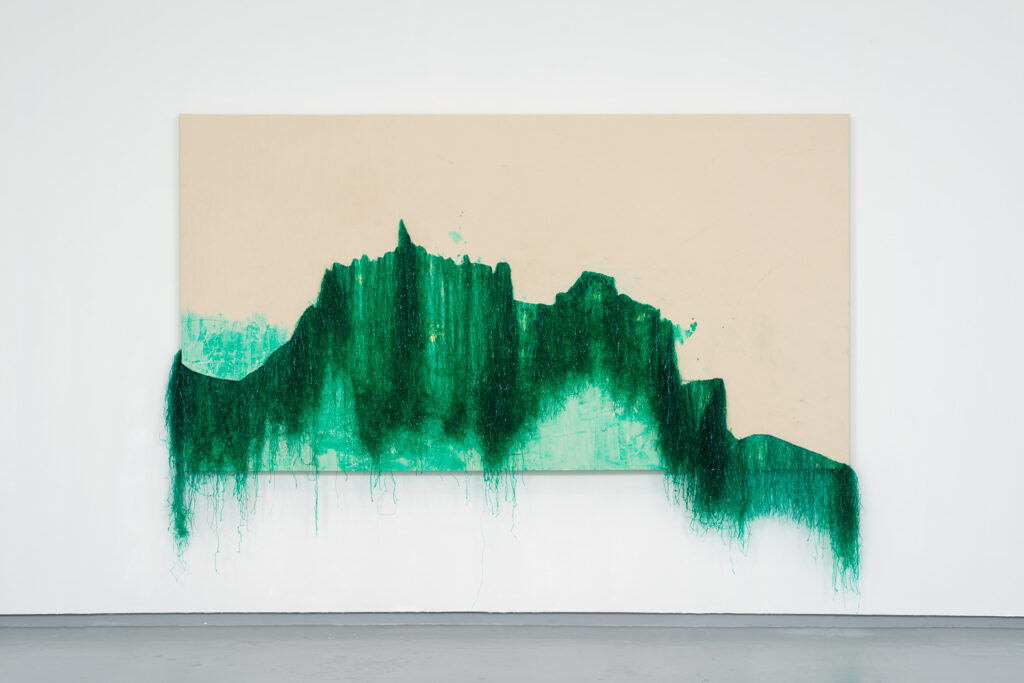Deschooling: climate and art
2. Communicating without aestheticizing or academicizing
Conversation with Angela Chan, creative climate communicator
Asemahle Ntlonti, Ezonzibileni III, 2020. Unthreaded polypropylene bags, soap and goal leaf on canvas. Photography by Matthew Bradley.Courtesty of the artist and What if the World Gallery.
First, why look at climate issues and art together?
I spoke with Angela Chan, founder of Worm: Art + Ecology, a long-term curatorial project that communicates intersectional climate change issues through creative practices. She describes herself as a Creative Climate Change Communicator (what a delicious mouthful!) in part to expand the definition of curator (which involves so much more than assembling exhibitions, like public engagement and research) as well as to stress the importance of communication when working with climate and creative practices.
Mike Hulme observes that “however our contemporary climatic fears have emerged… they will in the end be dissipated, reconfigured or transformed as a function of cultural change.” What does that cultural change look like?
I like Chan’s call to action:
“We need consistently new engagements from other disciplines to inform us that we don’t simply ‘aestheticize’ the crisis and so that we don’t fall into this trap that art does very well, which is ‘academicizing the crisis.’
Below is an edited version of our conversation on 12 October, 2020. While watching, keep in mind the previous metaphor of cards or tools. Shuffle or stack them up, assemble them however you see fit. Some key things to think about are:
- Intersectionality, or how issues like colonial histories, class, race, gender can and do overlap with climate issues. If you want more information on intersectionality as it relates to climate issues, check out Intersectional Environmentalist
- Speculative approaches as “an entry point into the many injustices that created climate change but also sustain it”
- Interrogating “fixed” knowledge, or facts that we take for granted since our individual perspectives on knowledge about both climate and art are not fixed. Here, this definition of charismatic facts is super useful
- How we communicate not just knowledge, but different medias, narratives, visual language? How do we talk inclusively about climate change with intersectional politics?
- Future narratives to encourage intersectional climate justice, and building bridges between literatures, languages and cultures.
Platforms like Worm: Art + Ecology are encouraging evidence of the growing body of creative practice and cultural research on climate change that avoid this trap. My own favourites from the platform are Climate Knowledges Documentation and Virtual Exhibition and this series of interesting interviews. They remind me that theories are tools, but so too and exhibitions and interviews.
Watch my interview with Angela Chan HERE and click HERE for the next text, which considers editing and curation in more detail.
References:
